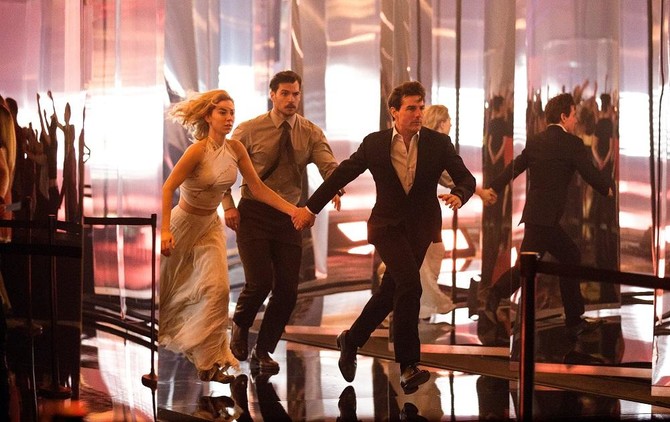Through 22 years and six entries, there is no question as to what the driving force of the Mission: Impossible film franchise is—it’s Tom Cruise. With the series, Cruise was, as its producer, very consciously launching his own action franchise, and each entry since has been guided first and foremost by what stunt he wanted to perform next.
Writers on the second entry in 2000 said that the script was mainly a matter of fitting together the action set pieces that Cruise had already mandated and planned for the film. Now, 18 years later, writer/director Christopher McQuarrie has stated that the latest entry, “Mission: Impossible - Fallout,” featuring a skydiving sequence filmed in Abu Dhabi, began with Cruise saying he would like to pilot a helicopter in a chase.
It’s no wonder that the plots of this series feel so incidental. American poet Maya Angelou once said, “People will forget what you said, people will forget what you did, but people will never forget how you made them feel.” I’m near certain that she was talking about this film franchise. What you remember, as the story of each film self-destructs five seconds after you leave the cinema, is the moments—Cruise hanging from the ceiling, Cruise dangling off the Burj Khalifa, Cruise strapped to the side of a plane. This series is a set-piece delivery mechanism, and its stories and central character—the IMF agent Ethan Hunt—are only there to make those moments happen.
A full year in the making. Check out how we did it. #MissionImpossible Falloutpic.twitter.com/FMsPWfSZfR
— Tom Cruise (@TomCruise) June 3, 2018
What is Fallout about? The previous installment’s terror group is back, they’ve got plutonium, and they plan to set off nuclear bombs. Ethan Hunt must pose as a terrorist and try to get the plutonium before they have the chance. That’s the plot, anyways. What this film is really about is Ethan Hunt, and how he goes about achieving his goals.
To celebrate #WorldEmojiDay, we bring you all of @TomCruise’s death-defying stunts for #MissionImpossible Fallout in emojis. Reply with the stunt you're most excited to see! pic.twitter.com/PtcoraVsfH
— Mission: Impossible (@MissionFilm) July 17, 2018
In Fallout, the name of the franchise is the key—each task that Hunt must complete starts off seeming difficult, and as it plays out, quickly seems truly impossible. Each sequence sets the stakes and then continues to raise them, giving this film a palpable tension unlike any action film has delivered in recent memory. But even as the odds get longer, and we the audience question how Hunt will manage to succeed, Hunt himself, even through all the punishment he takes, never loses faith—he will, simply, find a way.
This resonates because we believe it, too—not in the character, but in Cruise himself. In a series that has always relied on practical effects, we know, and are told over and over again, that this is really a 56-year-old Tom Cruise up there, risking his life, defying age, doing what no other person on Earth would dream of doing. Cruise is still the world’s best movie star, and best action star, because he decides he can be. It’s a faith that’s truly infectious. As stressful as this film is, it’s also, without a doubt, the year’s most uplifting, and life-affirming.
























